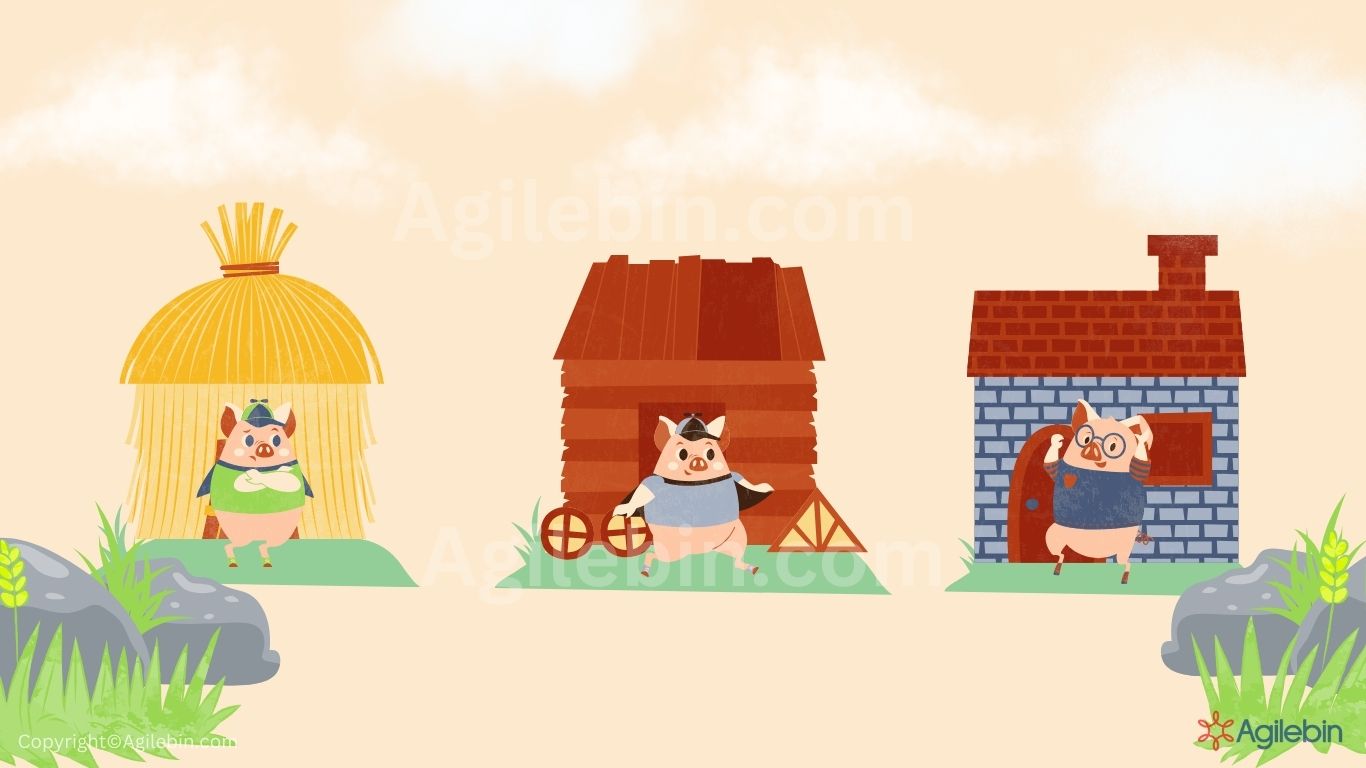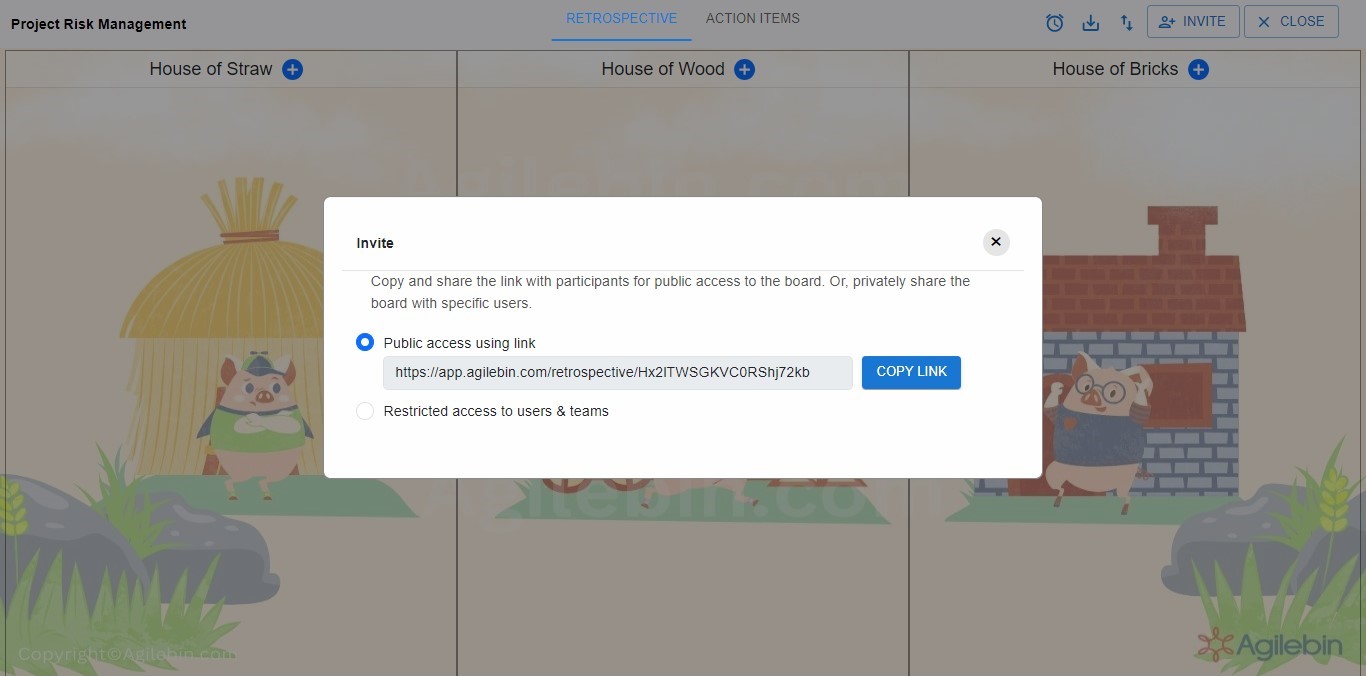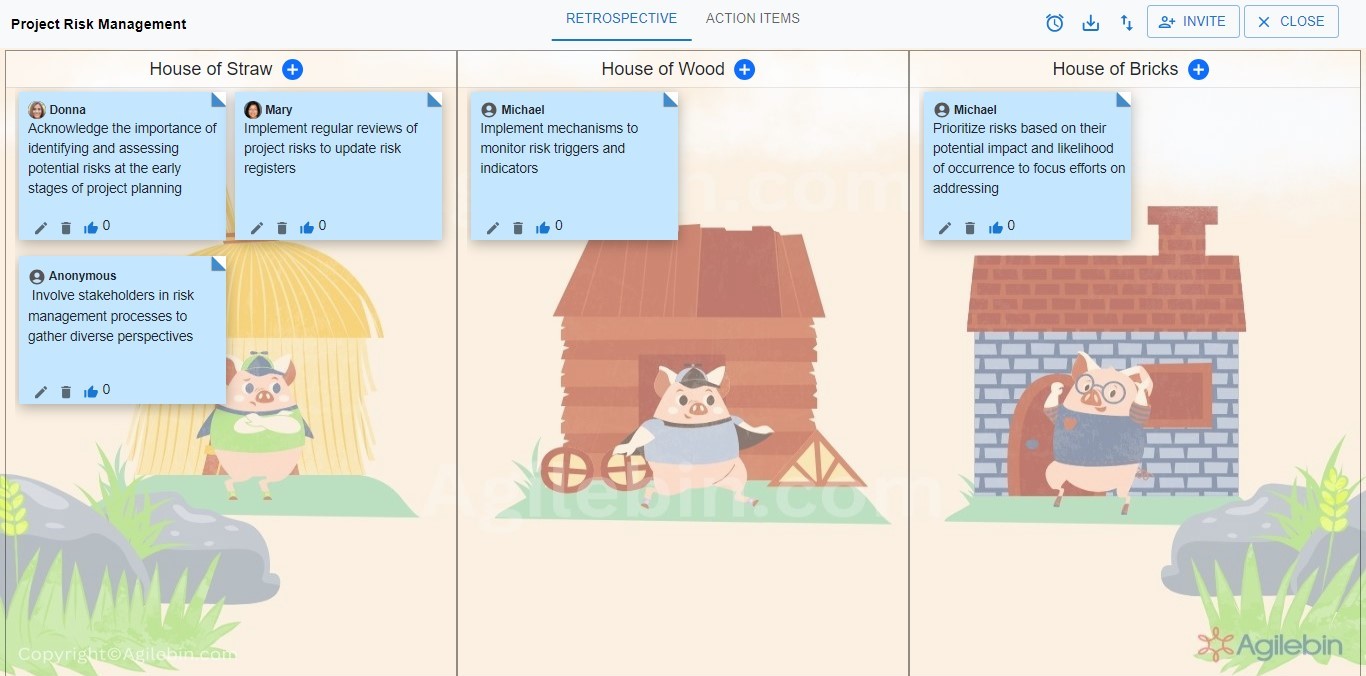Three Little Pigs Retrospective
A Three Little Pigs Retrospective is a team meeting to review successes, challenges, and improvements

What is Three Little Pigs Retrospective?
The Three Little Pigs Retrospective draws inspiration from the famous fable of the same name, where each pig builds their house with different materials, symbolizing various approaches to work or problem-solving. In this retrospective, team members reflect on recent projects or sprints, associating them with the three houses from the story: straw, sticks, and bricks. Each material represents a different level of stability, risk, or quality in the team's work. By exploring these metaphorical houses, teams can gain insights into their processes, decision-making, and outcomes, identifying areas for improvement and celebrating successes. Through this playful and imaginative approach, the retrospective encourages creativity, collaboration, and critical thinking, fostering a shared understanding of the team's achievements and challenges.
How to Run Three Little Pigs Retrospective?
The Three Little Pigs Retrospective is a creative and engaging way for teams to reflect on their recent projects or sprints. Follow these steps to conduct a successful retrospective:
- Setup: Begin by explaining the concept of the Three Little Pigs story to the team. Introduce the idea that each pig's house represents a different aspect of their work, such as stability, risk, or quality.
- Identify Houses: Divide a whiteboard or flip chart into three sections, labeling them as "Straw House," "Stick House," and "Brick House." Explain that team members will associate their recent tasks, decisions, or outcomes with one of these houses based on their perceived stability or quality.
- Reflect: Invite team members to share their experiences and insights by placing sticky notes or drawing symbols in the respective sections of the board. Encourage them to consider which aspects of their work felt vulnerable like straw, risky like sticks, or solid like bricks.
- Discuss: Facilitate a discussion around the reflections shared by team members. Explore common themes, patterns, or discrepancies among the different houses. Encourage open dialogue and constructive feedback.
- Action Plan: Based on the insights gained from the discussion, collaboratively identify action items or strategies for improvement. Determine how the team can reinforce their "brick house" aspects while addressing vulnerabilities in the "straw" or "stick" areas.
- Follow-Up: Document the outcomes of the retrospective, including action items and any decisions made. Assign responsibilities and timelines for implementing the proposed changes. Schedule a follow-up meeting to review progress and evaluate the effectiveness of the actions taken.
Columns in Three Little Pigs Retrospective
The Three Little Pigs Retrospective uses columns inspired by the houses from the classic story. Here are the columns and their significance:
- House of Straw: This column represents aspects of your work that may seem vulnerable or unstable, akin to a house made of straw in the story. It could include tasks or decisions that were hastily made, lacking in robustness, or prone to collapse under pressure.
- House of Wood: The House of Wood column signifies elements of your work that are stronger than straw but may still need reinforcement. It encompasses areas where improvements could be made to increase resilience and durability. Like the house of sticks, these aspects may be susceptible to external forces.
- House of Bricks: The House of Bricks column symbolizes the strongest aspects of your work, similar to a solid house made of bricks in the story. It includes tasks, decisions, or practices that are well-planned, executed with care, and built to withstand challenges. These are the most stable and reliable components of your work.
When to do a Three Little Pigs Retrospective
The Three Little Pigs Retrospective is best suited for Agile teams or any group seeking to reflect on their work in a structured and creative way. It can be particularly beneficial in the following situations:
- End of a Project or Sprint: Conduct a Three Little Pigs Retrospective at the end of a project or sprint to evaluate what worked well, what could have been improved, and how to enhance future iterations.
- After Significant Milestones: Use this retrospective format to review progress and gather insights after reaching significant milestones or completing major deliverables.
- Periodic Team Check-ins: Incorporate the Three Little Pigs Retrospective into regular team meetings or check-ins to maintain continuous improvement and foster a culture of reflection.
- Transition Points: Employ this retrospective method during transitional phases, such as team restructuring, process changes, or after encountering challenges that require reflection and adaptation.
How can you conduct a Three Little Pigs retrospective with Agilebin?
Effortlessly conduct a Three Little Pigs retrospective with Agilebin's ready-to-use template!
Why Agilebin's template? Because it provides a realistic and immersive experience, making your Three Little Pigs retrospective feel authentic and meaningful. With Agilebin's ready-to-use template, you'll feel like you're navigating through the actual process, allowing for a more effective and insightful retrospective session.
Choose Three Little Pigs retrospective template in Agilebin
Choose the Three Little Pigs Retrospective template from Agilebin's collection of retrospective templates. This template is specifically designed to facilitate the Three Little Pigs Retrospective process, providing a structured framework for your team's reflection and improvement discussions
Invite team members to participate in the retrospective session
Invite team members to participate in the retrospective session by adding their email addresses or sharing the session link directly with them. You can choose between public access using a link, allowing anyone with the link to join, or restricted access, limiting participation to specific users or teams.

Facilitate Discussion with Sticky Notes
Agilebin offers pre-defined columns for the Three Little Pigs Retrospective, including "House of Straw," "House of Wood," and "House of Bricks." Participants can add sticky notes to each column during the retrospective session, sharing their feedback, observations, and suggestions
